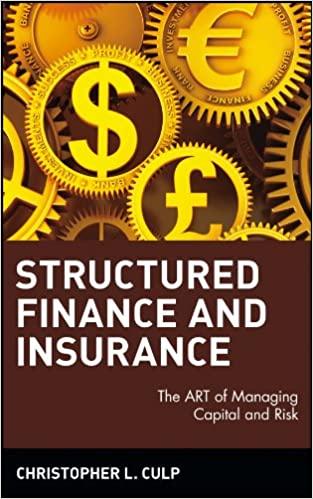Question
Assume you are the CEO of a company, MBA Inc, and you always act in the interest of existing shareholders . Your company has one
Assume you are the CEO of a company, MBA Inc, and you always act in the interest of existing shareholders. Your company has one asset, The Diploma, and one investment opportunity. The values of the asset and the opportunity depend on the state of the world. The opportunity requires an investment of $100 million, but MBAI has absolutely no cash or borrowing potential. Hence, the only way to invest is by raising new equity. The value of assets in place and cash flows from investment are as follows:
Boom Recession
Probability 1/2 1/2
Value of Assets in place 150M 50M
Cash flows from Investment 120M 110M
The state of the world will be revealed to you at t=1, just before you issue new equity, i.e. if you decide to issue at all. The outside shareholders will know of the state at t=2, only when the cash flows are realized. Assume you have no credible way of passing the information to the market except by your actions. Also assume everyone is risk neutral, you can ignore the time value of money and the old shareholders are passive.
(a) Assume that the CEO will not issue equity in both states of the world and consequently will not invest. What is the value of the equity of the company at t=0, i.e before the state is revealed to the CEO?
(b) Assume that the CEO will issue equity to raise $100M and invest in both states of the world. What is the value of the new equity at t=1? Calculate the value of the new equity at t=2 (you need to individually calculate the values for both states of the world). What is the market value of the old equity at t=0? What is the value of the old equity at t=2, when the state of world is revealed to the world (separately for both states of the world)?
(c) Now assume that the CEO will only issue equity and invest during recession and this information is known to everyone. Redo part (b) with this assumption.
(d) Which of the assumptions, part (b) or part (c), do you think is more realistic? (Remember, the CEO is acting in the interest of old equity holders). Can you predict what will happen in equilibrium and thus draw some inference about the information conveyed by equity issues?
Step by Step Solution
There are 3 Steps involved in it
Step: 1

Get Instant Access to Expert-Tailored Solutions
See step-by-step solutions with expert insights and AI powered tools for academic success
Step: 2

Step: 3

Ace Your Homework with AI
Get the answers you need in no time with our AI-driven, step-by-step assistance
Get Started


